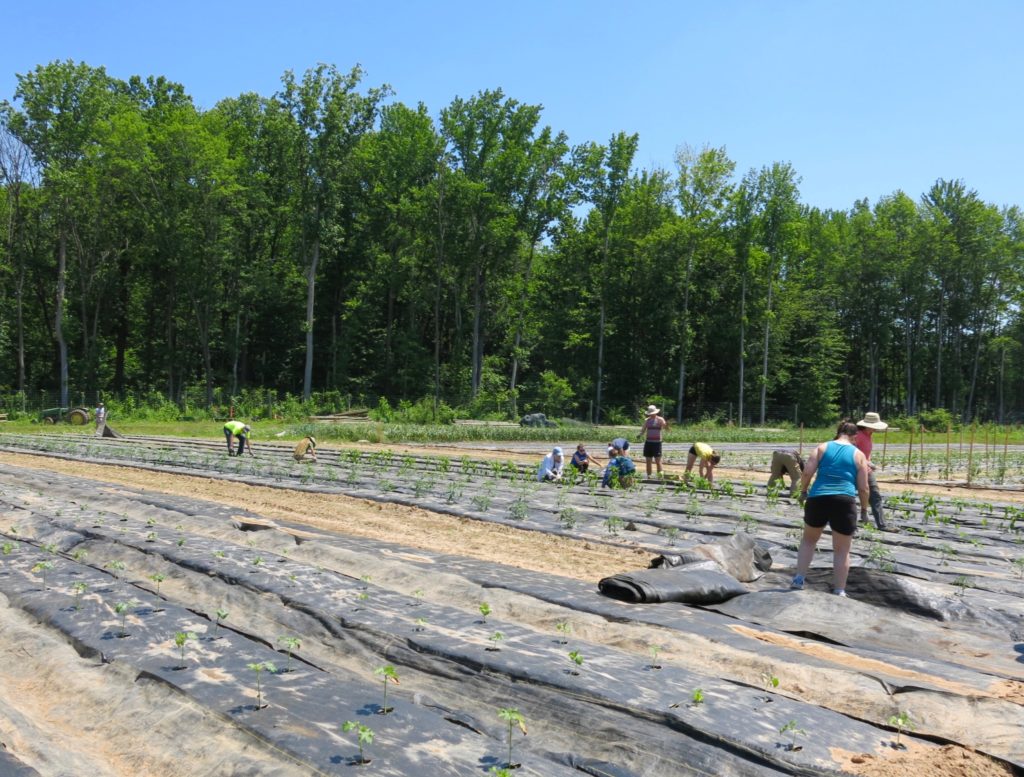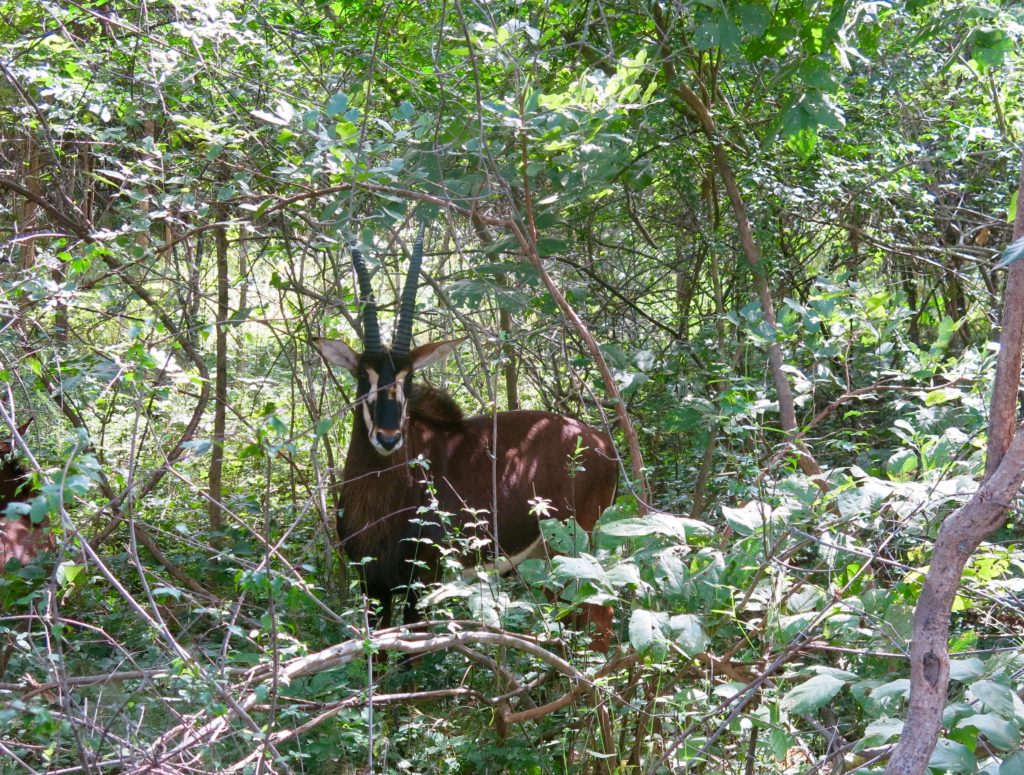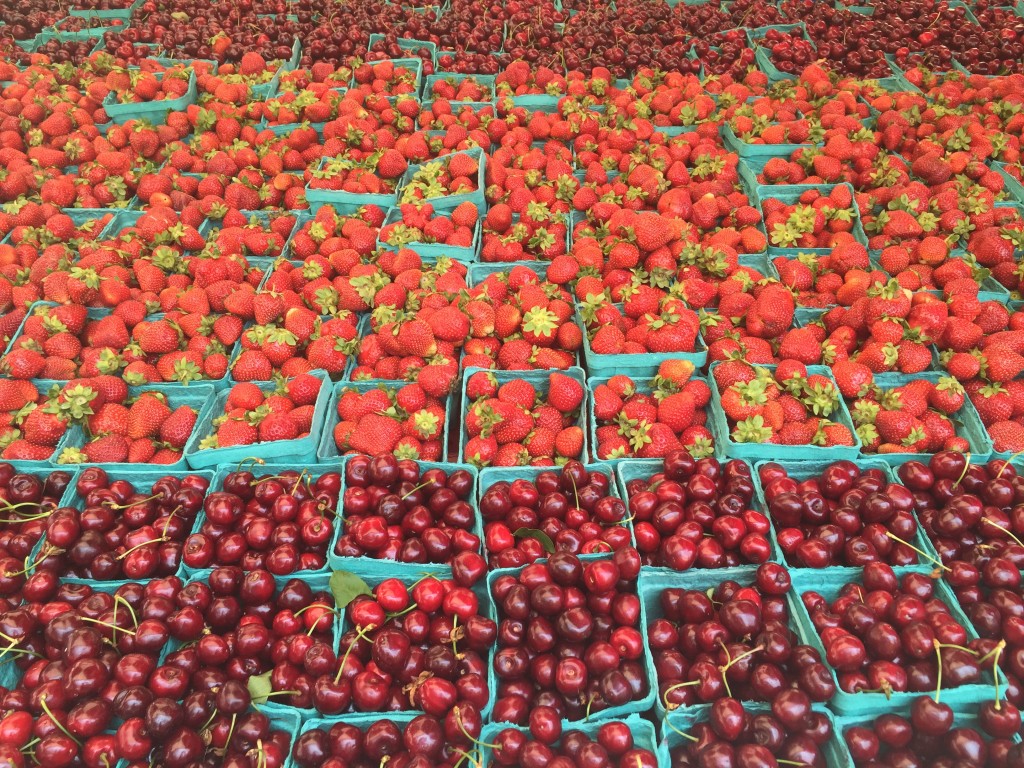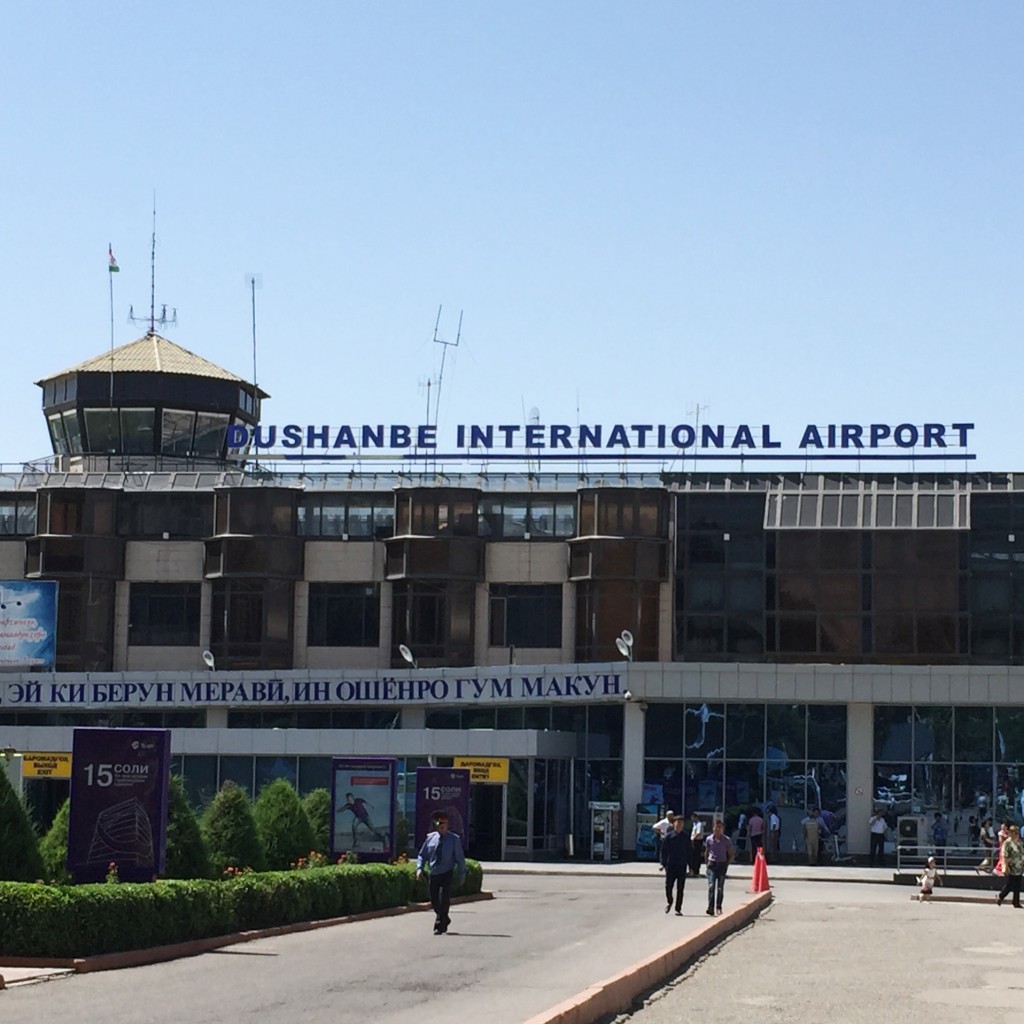Our rest stop of the day: Restaurante El Bolo Vista Gourmet. Despite guide book recommendations, I’m not sure if this is one of the best restaurants in town (most likely not…), but the view and the cool breeze are probably one of a kind in Trinidad!
Category Archives: On Agriculture and Food
Sunday Savor: Italian Style Pasta Salad
Another one of my quick favorites that is in season right now is my pasta salad with mozzarella, cherry tomato, baby spinach and olives. And then with a dash of olive oil, and salt and pepper Actually, pasta salad is a good quick dish that can be used as a slush dish for left-over veggies. Just mix together. I got hooked on whole wheat pasta on the third try and prefer it now since it tastes more than white wheat. But an advice is to measure portions and be careful with olives, olive oil, and cheese. A cup (2.5 dl) of pasta is 200 kcal, and regular veggies adds very little, but it’s easy to make portions twice that size and then drown with olive oil and or cheese. So top up with veggies instead!
For those who enjoy it, a good vinaigrette probably adds an extra touch to this recipe, but I like it simple, optimizing the taste/ingredients ratio!
Back to the Farm
Back to the Farm – literarily! Saturday, I joined a couple friends and volunteered at the Bread for the City farm lot a few kilometers outside of DC. Bread in the City support low-income families in DC with food and strive to create food justice by increasing access to fresh produce in food desert neighborhoods. We were about 35 people there, helping out with weeding, pruning, and picking berries. My friends and I ended up in a group that arranged corn-based cover plastic to avoid the spread of weed and the decrease evapotranspiration. Compared to the farmers that I work with in Malawi and elsewhere, this was very light work and on,y for a few hours, but lots of fun. And incidentally, Bread for the City grow on UDC’s land, in the same place as their research plots and greenhouses with hydroponics and aquaponics are located. So I already spent several Saturdays there when I took my Certificate in Urban Agriculture at UDC last year. A good start of the weekend!
Farmers for the day: Diana, Jake and I!
Sunday Savor: Overnight Oats
One of the ways to reduce our own environmental footprint is through food. We can chose to eat more locally grown and organic food, less meat and animal sourced products, drink tap water instead of bottled beverages when possible, and cook more ourselves. This doesn’t always apply as efficiencies in our food chains can at times be counterintuitive, but broadly, I’d say these are some good pointers for sustainable food. And, of course, DON’T THROW AWAY FOOD! I write in capital letters as some 30% of all food that reaches retail is thrown away globally.
I try to live as I learn because I know how important this is for our planet. There is just one problem; I don’t particularly like cooking unless I have guests, and while I want what I eat to be nutritious, I really want cooking to be something I don’t have to put a lot of time and thoughts into. I also try to not buy groceries more than once a week as there are so many things I prefer to do with my time other than shopping. Instead of giving up this seemingly impossible equation, I have developed a few dishes that are easy and quick, and fairly healthy, that I thought I’d share to encourage cooking among likeminded.
First out is overnight oats: the new trendy breakfast that cafes charge ridiculous amounts for. The great thing with this breakfast is not only that it’s quick and cheap, but also that you can make a batch and keep for the week. (For how long exactly? Golden rule, if it tastes weird after a few days, you probably shouldn’t eat it! But according to other recipes that I scanned, they said 3-5 days, depending on the perishability of your ingredients.)
There are a bunch of different versions of the overnight oat recipe, including with greek yoghurt, nut butter, vanilla extract, and maple syrup, but mine is the most basic and without unnecessary added sugars. For 5 portions, mix 2 cups (5 dl) of old fashioned rolled oats with 2 cups (5 dl) of milk (I normally use regular soy milk, haven’t tried with almond.) Mix in a bowl and divide into 5 jars. Put in the fridge over night and grab one in the morning. Add berries, or pieces of fruits, and maybe some nuts or chia seeds on the day that you will eat the oats. Off season, I keep frozen berries in the fridge, which is perfect to drop the jar in together with a few coconut flakes, and then take along to work. Just remember that while berries are almost calorie free unless eaten in large amounts, nuts quickly adds to the calories amount. So limit to a few for flavor and healthy fats!
And an attempt to visualize the process:
1. I use small glass jars // 2. Mix oats and milk in a bowl // 3. Put in jars and put in fridge over night // 4. The day of eating, add berries, fruits, and/or nuts and chia seeds // 5. Bone appétit!!
Women and Men and Agriculture
As with everything else, gender roles are very rigid in agriculture. They are not the same globally: in some countries, taking care of livestock is a man’s job; in some it’s a woman’s. In one place, a certain crop is cultivated by predominately women; in another place it’s grown by men. Sometimes, women add value to products through cheesemaking, preservation of crops or fish, brewing beer, etc, and take them to the markets, in other countries this is done by men.Sometimes, these roles vary even between regions within a country. Women and men around the world participate almost equally in agricultural but they do not always have equal access to inputs, resources, services, and knowledge. Which of course prevents them from making the most out of their livelihoods and makes the sector use scarce resources such as water and land in a suboptimal manner. Plus countries are not growing and poverty is not decreasing as fast as they could. Last week, I participated as a discussant in this webinar on gender in agricultural risk management, where we talked about some of these issues and how to reach both men and women to better manage agricultural risks.
Two impressive female farmers in Malawi that are part of a cooperative. They are responsible for the irrigation pump behind them, which completely changed the business for the cooperative as they now can grow seeds and high-value horticulture. The two women asked me to take the photo of them after showing me the pumping mechanism, so I take the liberty of posting the photo here.
Snapshots from Zambia
I’m back after a week in Zambia, where I together with one of my favorite colleagues from Uganda held a training on agricultural risk management. The impacts of risks such as droughts, floods, pests, and diseases are increasing around the world because of climate change. This, in turn, impacts people’s livelihoods but also food supplies and food prices, and it sometimes cause countries that normally would export surpluses to neighbors to close their borders. This training was about how it’s possible to develop effective ways to measure the impacts of these (and other) risks, and how they can be managed better.
I was only there for a week but the actual training was located about an hour outside of Lusaka, in the middle of a wildlife reserve, so I got to see some of Zambia’s nature. It was beautiful, of course! The last morning, before we left for the airport, we went on a one-hour tour around the park, so I got to see a few new animals that I’ve never seen before. That – and the fact that I thoroughly enjoy holding trainings – made this a very pleasant trip!
As always, there are more pics on my IG @asagiertz
I Love Sunday Mornings!
Sunday mornings is one of my favorite time of the week! I’m often more rested than Saturday, without anything that I need to get to, and with a whole day in front of me. Sometimes, like this morning, I make scones or no-sugar breakfast muffins to have with my morning tea, which an hour or so later is later replaced with a coffee. I then take some time to go over what I got done over the past week, next week’s to-do list, and creative projects, while listening to my favorite CNN programs on TuneIn: Fareed Zakaria’s GPS and Brian Stelter’s Reliable Sources. It’s two of the few programs on CNN when they actually do analytical interviews and have discussions with non-politician.
Otherwise, non-local tv news here are quite sad – there is little real information, and instead news programs mainly consist of politicians coming on for a couple of minutes for a few questions that they rarely answers and instead take airtime to get their message through, without any nuances and often not fact based. (The last part being extra depressing for me since I am always advocating for evidenced-based policy making in my work…) And with massive amounts of commercials. I noticed when I was watching CNN in Addis Ababa last week that some of the programs that I listen to in the U.S. broke for a proper news update together with a few adds, while here in the U.S., the same break is just one long commercial break. It’s of course good news for quality printing media, since we are all subscribing – subscriptions to papers like The New York Times have gone up since the election.
I truly hope that poor-quality news programs are not a trend among tv news around the world – democracy and progress need reliable news and tv can have a lot of positive development impacts – but that the U.S. will instead see higher quality in their news over time. It seems like the election was kind of the bottom mark here, and that there are some attempts by media executives to turn this around. In the meantime, I’m enjoying the Sunday morning shows, and get the rest of my news from diverse sources from around the world.
My plans for today? Work. More specifically, detangling how agricultural risks impact public expenditures for – yep – evidence based policy making!
My First Visit to Kenya: People, Coffee, and Urban Agriculture
Sometimes life goes so fast that it’s difficult to keep up! This is essentially what has been the case for me since last time I wrote. I will spare you a tedious recap, although I might write now and then about things that I have done in this period, because a few of them have been quite interesting. But for now, I’ll remain in the present because enough is happening in he next two weeks to hopefully keep your interest up. Just like last June, I’m on a multi-country trip, visiting four countries in Africa this time, and three of which are new to me. So it should be an interesting trip this time!
My first stop was in Nairobi, where I’ve spent these past two days. I wish I could say that I visited the national park in the middle of the city, which Nairobians are very proud of, or that I went to a coffee roaster, or took a sightseeing tour. Or even went on a local bus! But no – I did none of that! After I arrived on Saturday around midnight, I stayed at the hotel all Sunday together with a colleague, preparing for a very busy week with a full agenda in three countries. And today, we’ve have had back to back meetings in between which I’ve tried to catch some impression of the city life through the backseatof a car window. Our main tourist stop was at The Junction (a shopping mall) where we picked up a cup of coffee at local coffee chain the Dormans, and I walked out with some very fashionable pieces of Kenyan garment.
As for agriculture, I was happy to see that fallow urban land in the middle of the city had been organized into small garden lots, so urban agriculture in other words! Whether this was mainly for household consumption, or for any commercial activity, I wasn’t able to see, but it was enough to make me feel inspired and confirm my conviction that agriculture can be an integrated part of the urban space in any city. Otherwise, I had lots and lots of delicious Kenyan coffee, which also proved very effective in curing jet-lags!






View over Nairobi’s skyline from mmy hotel room // Sunday work location at the hotel – kind of ok! 🙂 // fruitfilled brekfast with fresh sqeezed mango juice and favorite mini bananas // rose decoration in the bathroom // an attempt to capture street food stand from a moving car // Kenyan coffee! Last but not least: Furahiya chakula chako – enjoy your meal (Swahili)
I definitely hope that I get to go back and see more one day because Kenya such a fascinating and beautiful country! Even just driving around town gave a glimpse of richness of the flora, which many Kenyans also seem to cherish and I saw ample of roadside stands with pots and plants, and even cut flowers (no doubt from their very successful cut flower export industry) in a way that I have not seen in any other country as far as I can recall, except possibly England. I also had a chance to meet quite a mix of people in the short time that I was there, and Nairobi (and probably Kenya as a whole) is such a melting pot with people from all over the world, from those who came with past intercontinental trade routs and during the colonial era, to migrants from all over Africa, and with the Chinese investors and company employees being the latest addition to Nairobi’s population. A true cosmopolitan city in other word! But, alas, my curiosity over Kenyan culture and Nairobi’s urban agriculture will have to be kept in check for the moment as I am now on the flight to Gaborone, Botswana, which is the next stop on my itinerary.
Summer Time in Washington DC
So my past posts have hopefully made it more obvious why I’ve fallen behind on blogging these past months. When I came back to DC after 3.5 weeks on three continents, it was already summer – my favorite season! In Washington, that means lots of ice coffee at outdoor cafés, Friday Jazz in the Sculpture Garden, Screen on the Green (outdoor cinema), people doing yoga in the parks, and of course peach and berry season at the farmers markets!
I love apricot marmelade on toasts and for the first time ever, I made my own this year – a taste of summer for the winter season! The pics are from our farmers’ markets in Dupont Circle, DC (Sundays) and Silver Spring, MD (Saturdays), but there are many more in the Washington area.
Stops No 3, 4, and 5: Central Asia, or “It’s Friday so We Must Be In Dushanbe”
The final week of my trip was in a way the craziest because of the many stops, but I had at the same time completed a lot of work and since we our presentations during the week had to be translated into Russian, also these had been completed in advance. Our first stop was in Bishkek, followed by Astana and Dushanbe. Due to the flight connections, we ended going through Almaty several times, and even stayed there one night on our way from Astana to Dushanbe. It was a lot of airports… But I LOVE Central Asia so I was happy to see so many places! It was also my first time in Tajikistan, and I wish I could have seen more but due to the flights we didn’t arrive until Friday morning and with a presentation Friday afternoon, we didn’t have much time to see much more than the office and the conference room. Still, we did have lunch at a small canteen where I got both a glass of kompot (sweetened fruit drink) and syrniki (cheesecake), so I was happy. Unfortunately, I didn’t take many pics, but here are a few:
From the top: View from my hotel room over Bishkek with its traditional circus and a mosque // Children’s Day in Bishkek // View of Astana from my office // Lagman and dumplings – traditional Kyrgyz food // The grandiose conference room in Bishkek where our stakeholder meeting took place // My name written in cyrillic (or almost at least…) // Kazakh chocolates // Dushanbe’s airport // The Alay Mountains seen from above // Sunset over Almaty // Night view of Almaty and good bye Central Asia for this time! More on our actual work can be found here.








































